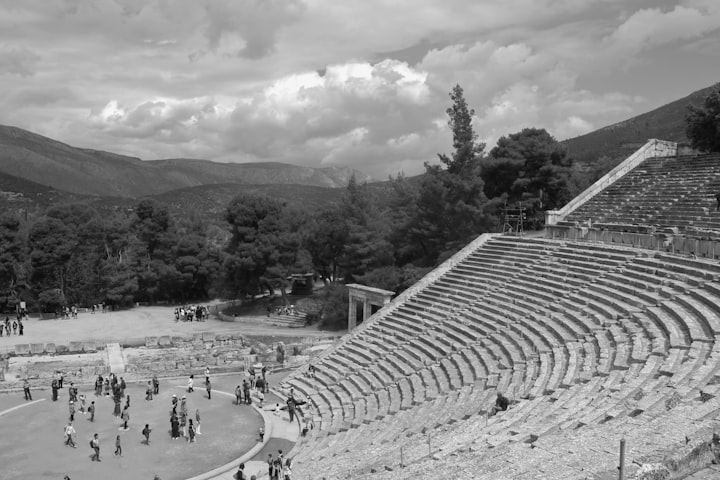The Difference Between an Article and a Classic Piece of Writing
understanding their purposes, and unlock the secrets behind their captivating narratives. Read on to learn more!

Introduction
Writing comes in various forms, each with its own distinct style and purpose. Two commonly encountered genres are articles and classic pieces of writing.
While both strive to convey information and engage readers, they differ in several aspects. This article delves into the difference between an article and a classic piece of writing, highlighting their unique features and shedding light on their contrasting nature.
So, let’s embark on this literary journey and unravel the essence of these captivating written works.
Difference Between an Article and a Classic Piece of Writing?
When exploring the difference between an article and a classic piece of writing, it’s essential to understand the nuances that set them apart.
While both types of writing aim to captivate readers, they diverge in terms of structure, purpose, style, and even the emotions they evoke.
Let’s delve deeper into their dissimilarities:
1. Structure: The Backbone of Writing
Structure plays a pivotal role in distinguishing articles from classic pieces of writing. While an article typically follows a standardized format with clear sections and headings, a classic piece of writing embraces a more fluid structure, allowing the narrative to unfold organically.
Articles often feature subheadings to break down the content into manageable chunks, making it easier for readers to navigate.
2. Purpose: Informing vs. Entertaining
The primary purpose of an article is to inform readers about a specific topic, providing them with accurate and concise information. It aims to answer questions, solve problems, or share insights on a particular subject.
On the other hand, classic pieces of writing are designed to entertain, inspire, or evoke deep emotions. They often explore complex themes, delve into the human psyche, or offer profound reflections on life, love, and the human condition.
3. Style: Formality vs. Artistic Expression
When it comes to style, articles generally adhere to a more formal tone. They rely on straightforward language, present facts objectively, and maintain a professional approach.
Conversely, classic pieces of writing allow authors to unleash their creativity, using vivid imagery, figurative language, and evocative descriptions to create an immersive experience for readers. The prose in these pieces often exhibits an artistic flair and can be laden with symbolism, metaphors, and lyrical expressions.
4. Emotional Impact: Engaging vs. Provoking
Articles aim to engage readers intellectually, providing them with valuable insights and useful information. They strive to evoke a sense of curiosity and impart knowledge.
In contrast, classic pieces of writing often aim to provoke an emotional response. They tap into readers’ emotions, stir their imagination, and leave a lasting impact that transcends the written words. These pieces may evoke joy, sadness, awe, or even contemplation.
5. Narration: Objective vs. Subjective
One significant distinction between articles and classic pieces of writing lies in the narration style. Articles maintain an objective tone, presenting information from a neutral standpoint, and relying on facts and evidence to support their claims.
In contrast, classic pieces of writing embrace subjective narration, often presenting the author’s unique perspective, personal experiences, and opinions. This subjective approach adds depth and authenticity to the narrative, fostering a deeper connection between the author and the reader.
6. Engagement vs. Reflection: The Role of the Reader
Articles actively engage readers by presenting information, offering guidance, and encouraging them to take action or delve deeper into a subject. They aim to inform and equip readers with knowledge.
Classic pieces of writing, on the other hand, invite readers to embark on a journey of reflection. They encourage contemplation, challenge beliefs, and spark introspection, allowing readers to derive personal meaning from the narrative.

Frequently Asked Questions (FAQs)
1. Are articles and classic pieces of writing mutually exclusive?
Not necessarily. While articles and classic pieces of writing have distinct characteristics, there can be overlap. Some written works may incorporate elements of both genres, blending informative content with artistic expression.
2. Can an article be transformed into a classic piece of writing?
Yes, with careful crafting and a shift in style, an article can be transformed into a classic piece of writing. By infusing creativity, emotions, and subjective narration, an author can transcend the boundaries of the article genre.
3. Can classic pieces of writing include informative content?
Absolutely. Classic pieces of writing can incorporate informative elements while still maintaining their artistic flair. Authors can weave facts, historical references, or scientific knowledge into their narratives, enriching the reading experience.
4. Which genre is more suitable for academic or professional writing?
Articles are generally more suitable for academic or professional writing due to their structured format, formal tone, and objective approach. They allow for clear presentation of information and easy comprehension.
5. Can a classic piece of writing lack a clear structure?
Classic pieces of writing often embrace a more fluid structure, allowing for a natural flow of ideas. While they may not adhere to a rigid format with headings and subheadings, they still possess an underlying organization that guides the narrative.
6. How do readers benefit from both genres?
Readers benefit from articles by gaining knowledge, finding solutions to problems, or discovering new insights. Classic pieces of writing offer readers emotional resonance, artistic experiences, and an opportunity for introspection and personal growth.
Conclusion
Understanding the difference between an article and a classic piece of writing enables readers to appreciate the unique qualities each genre brings to the literary landscape.
Articles provide valuable information and engage readers intellectually, while classic pieces of writing transport them on an emotional and artistic journey. By recognizing and embracing these distinctions, readers can fully immerse themselves in the diverse world of written expression.
QuestionS from creator!!!
Am I good enough to make you understand what is article and what is a classic piece of writing???
Is this an article or a classic piece of writing??
Did you enjoy the read??
Do you want me to write more about such topics like genres of writing????
Do let me know in your comments !!!!!!
About the Creator
salma fawad
salma fawad is a content creator, proof reader and an online instructor with a passion for writing, teaching and freelancing. With 7 years of experience in freelancing , Salma Fawad has gained a wealth of knowledge and expertise.






Comments
There are no comments for this story
Be the first to respond and start the conversation.